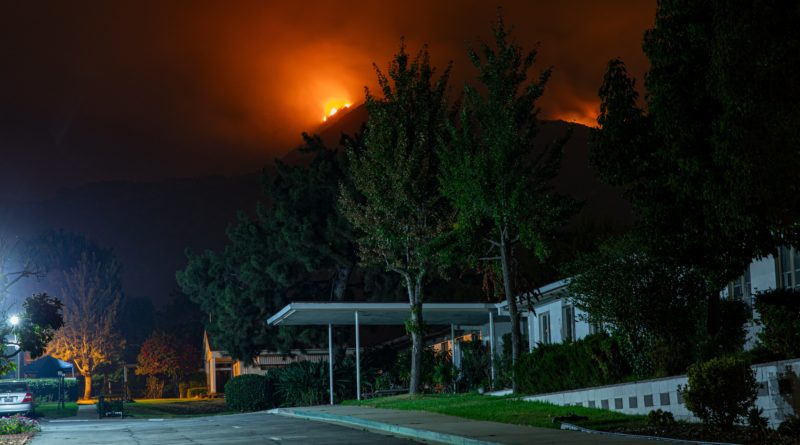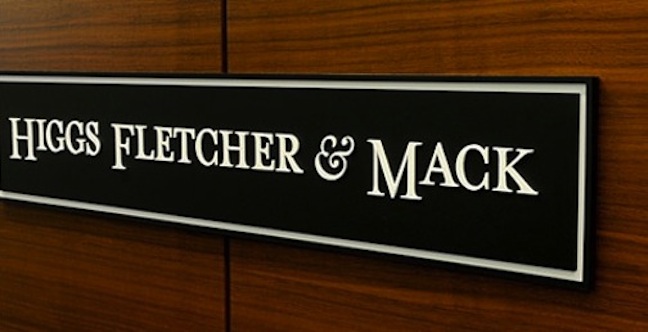Lara’s quid pro quo: To increase their premiums, insurance companies must write more policies in wildfire zones
By Douglas Page
While Insurance Commissioner Ricardo Lara says his plan – to make California a better market financially for major home insurance providers by December 2024 – there’s a chance, says one state government official, it could be implemented sooner.
As laid out last week, the plan is that state Department of Insurance will be more welcoming to consumer insurance providers’ desired premium increases if they combine to write 85% of their property insurance policies in high-risk fire zones so there will be fewer policy holders on California’s FAIR Plan, which covers wildfire risk.
Many homeowners, especially those considered to be in high-risk fire zones, are purchasing two policies: One from the California FAIR Plan so their home is covered for wildfire risks and another that covers for other risks. In some cases, homeowners are seeing a 100% or more increase in their property insurance costs because they had to buy the two policies, some California-based insurance executives told SD METRO.
According to Lara’s office, State Farm, which has the most market share in California, is seeking a 28.1% increase in its homeowners’ annual premiums this year while Allstate wants 39.6%. Farmers sought a 17.7% increase but was only approved for a 12.5% increase. Lara’s office says Farmers is only writing 7,000 new homeowner policies each month.
California might be a critical real estate market for the insurance industry. The aggregate value of the Golden State’s residential real estate is the largest of the country’s 50 states, Zillow reported earlier this year, worth about $9.5 trillion. Florida, New York, and Texas are next in line, says Zillow, but the aggregate value of their residential real estate is considerably less, between $3.6 and $3.2 trillion.
As presented by Lara, the idea is that if insurance companies wish to secure the annual increases they want for their premiums, they will write “no less than 85% of their statewide market share in wildfire distressed areas, reversing a trend of a growing FAIR Plan and closing the insurance gap.” he said last Thursday.
The number of FAIR plan policy holders among homeowners more than doubled between 2018 and 2022, from 126,709 to 272,846.
According to Lara, the plan is supposed to be in place by December 2024.
But Dale Mentink, assistant chief counsel at the state’s Office of Administrative Law (OAL), which reviews proposed policy changes by the Golden State’s more than 200 state government agencies, says it could be implemented sooner by using emergency regulations.
“And then, while those are in effect, (the Department of Insurance) would do the work necessary to make them permanent over the course of the next year,” he said. “Emergency regulations only last 180 days, and they can be readopted for two 90-day periods, which gives you that year.
“Oftentimes, an agency will start out with emergency regulations about something that’s urgent, and get those on the books, and then work to notify the public, having hearings and then, eventually, convert them into permanent regulations because they’ve gone through the process.”
The OAL, says its website, is “responsible for reviewing administrative regulations proposed by over 200 state agencies for compliance with the standards set forth in California’s Administrative Procedure Act (APA), for transmitting these regulations to the Secretary of State and for publishing regulations in the California Code of Regulations.”
Mentink also cautioned he wasn’t privy to Lara’s plan to put the new policy into effect.
It’s possible, according to the OAL’s website, the state’s citizens could be allowed to voice their opinion on Lara’s proposal.
“The requirements set forth in the APA are designed to provide the public with a meaningful opportunity to participate in the adoption of state regulations and to ensure that regulations are clear, necessary and legally valid,” the OAL says on its website.
One observer, who runs a consultancy to the real estate industry, Rick Sharga, CEO of Trabuco Canyon, Calif.-based CJ Patrick & Co., offered up a reason Lara’s plan might not turn into reality.
“It’s important to note these changes aren’t due to go into full effect until December 2024, and a lot of can happen between now and then, especially with politicians and consumer advocates involved in the process,” he said.
“The deal that Lara struck with the insurance companies shows just how desperate the situation was becoming in California,” Sharga said. “The two concessions made by the state – allowing insurance companies to pass through rising reinsurance costs, and to raise rates based on anticipated catastrophic losses – bring California regulations more in line with many other states but will, undoubtedly, result in rate increases for many or even most property owners.”
Sharga noted he’s heard many anecdotes about home sales falling through because a prospective homeowner was unable to secure an insurance policy – “at any price.”
“The hope is that loosening these regulatory restrictions will bring back the major insurance providers who have exited the state,” Sharga said. “Consumer advocates fear that premiums will soar – and for many property owners they probably will.
“But the alternative – not being able to insure a property, or only doing so through the state’s FAIR Plan – was untenable as well,” he continued.
“This is a historic agreement between the Department of Insurance and insurance companies,” Lara said. “Today, there are parts of the state where no insurance company will even return a consumer’s call and the only option is the (California) FAIR Plan.”
As he sees it, the increasing number of policies written by the FAIR Plan could cause financial problems for those insurance companies that continue to write homeowners policies in California.
“If the FAIR Plan goes insolvent, insurance companies are on the hook for the unpaid FAIR Plan losses,” he said. “While that hasn’t happened in nearly 30 years, this uncertainty is driving insurance companies to further limit coverage to at-risk Californians.”
Further, he said, “Under Proposition 103, insurance companies can legally refuse to write insurance unless they’re able to meet 100% of their consumer claims, cover their expenses, and earn a fair return.”
Lara said, the agreement will mandate “that insurance companies offer discounts for home hardening,” meaning they’re better protected against wildfires.
He also said that reinsurance cost will be taken into consideration but with a particular modification.
“We will also explore allowing California-only reinsurance costs. Let me say that again. California-only reinsurance costs.
“Reinsurance is a tool many insurance companies are using to manage their climate risk and continue writing policies. But I want to underscore that Californians will not pay for the cost of hurricanes, fires, and floods across the nation and around the world,” Lara added.
Finally, Lara said, his department will continue to regulate those insurance companies, as Proposition 103 allows, that do business in the Golden State. Proposition 103, passed in 1988, requires insurance companies selling homeowners policies in the state to seek permission from his department before raising their annual premiums.
“The Department of Insurance will continue to control the regulatory process on rate review, catastrophic modeling and California-only reinsurance, guaranteeing public input and compliance with our transparency laws,” he said.
One Los Angeles-based consumer advocate, Harvey Rosenfeld, who leads Consumer Watchdog, sees Lara’s plan very differently.
“The big news is that the state’s elected insurance commissioner betrayed his constituents,” he said, referencing that Lara’s position is an elected one. “He has negotiated behind closed doors with a plan to deregulate and diminish the protections that the voters passed (Proposition 103) against price gouging by insurance companies.”
Lara came under scrutiny about five years ago when the San Diego Union-Tribune reported that six months after first being elected the state’s insurance commissioner, in 2018, he accepted “tens of thousands of dollars in contributions from insurance executives, their spouses and others with business pending before” the state’s Department of Insurance. Lara was re-elected as the state’s insurance commissioner in 2022.
As Rosenfield sees it, Lara’s plan will give homeowners insurance companies nearly unlimited power to raise premiums.
“I think it will cost homeowners anywhere between a hundred and, potentially, thousands of dollars a year more on their insurance bills because he’s going to allow insurance companies to do two things: He’s going to allow them to use models and to force holders to pay the cost of reinsurance,” he said.
Rosenfield doesn’t think Californians will ever see the deal that Lara struck.
“I’m guessing we’ll never see the deal,” he said. “And I don’t believe for a second that the (insurance) industry will sign an agreement that commits them to sell insurance to every person who needs it in the marketplace, not for a second or even 85% of the people who need it in the marketplace.”
Rosenfield said his organization may take legal action to prevent Lara’s proposal from taking effect.
Douglas Page is reachable at dpage@sandiegometro.com


